The FAI World Aerobatic Championships 2019

Photo © FAI / C Reveret
The 30th edition of the FAI World Aerobatic Championships took off on the 22 August with an opening ceremony at 6pm held at the Châteauroux-Centre airport in central France. This year's competition ran from 22 to 31 August and included 18 teams from around the world. Pilots from Australia, Switzerland, Russia and the USA were among those battling to steal the crown from the reigning French team.



Photo © WAC / www.urukai.fr
More than 100,000 spectators passed through the gates of the event site to witness their incredible feats of aerobatic skill. Visitors were on the final day of the event treated to a spectacular air show including a wing walking display and demonstrations by several French Army teams.
Of the 61 entries 48 of the pilots were flying Extra 330SCs'. One flew an Extra 300S, One an MXS, two in Sukhoi's 26, two in the Edge 540, one in a Laser 230, three in the Cap 232, three in Sukhoi's 31 and one in a Xtreme 41.
Six countries, France with 14, Russia and Germany with 11 each, the USA with 7 and the UK and Spain with 5 each accounted for 53 of the 61 entries.
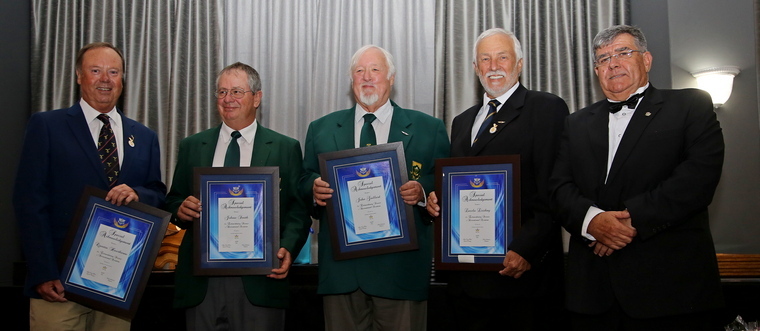
South Africa was represented by judges Quintin Hawthorne (3rd from left) and Laszlo Liszkay (4th from left). Other, not involved during the WAC are Quintin Hawthorne extreme left, second left Johnnie Smith and extreme right Paul Lasstruci.
Unlike in the past no South African pilots entered this year's competition. However, South Africa was represented by Quintin Hawthorne and Laszlo Liszkay who both served on the judging panel.
Grading or judging an aerobatic sequence is not a simple task, since the figures can be complex and applying the quite precise grading criteria requires not only a good deal of human "judgement" but the speed and skill to keep up with the action.

Photo © WAC / www.urukai.fr
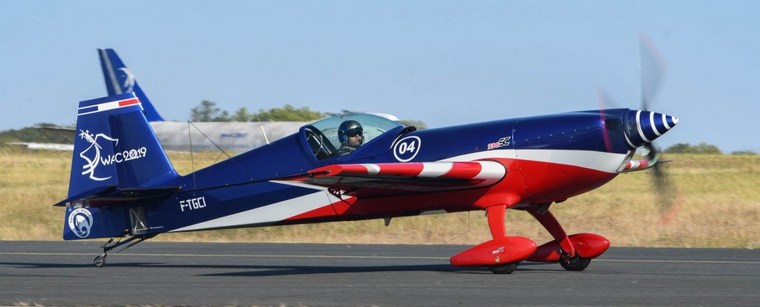
Photo © WAC / Florence Krust
The function of the judges is to decide which pilot was best in a reasonably fair and robust way in meeting the elements set for each flight. Judges do this by using a system for measuring how closely the elements in each flight meet this definition. The measuring system allows the judges to judge each competitor's performance against what was required during the specific flight.

Photo © WAC / www.urukai.fr
 
Photos © WAC

Photo © WAC / www.urukai.fr
In aerobatic competitions, every category is conducted within a broad set of detailed regulations that provide for pilots: a structured image system that uses Aresti cryptographic symbols from which a sequence of figures can be designed, normally in accordance with a set of rules specific to their category and the programme to be flown. In most cases, basic manoeuvres have rolls added to create each complete figure and a logical system is applied to establish the composite difficulty or K-factor for each one.

For Judges a set of paperwork that matches each sequence on which an opinion for every figure can be recorded as a numeric grade in ½ mark increments from ten down to zero, or a Hard Zero (HZ = wrong figure flown / major error seen), or a Perception Zero (PZ = a perception-related error seen), or an average (AV = unseen by the judge for some reason). Some overall assessment areas that are also graded such as 'Positioning' and finally - a range of penalties that can be applied to reduce the pilot's final score in case of rule violations etc.
Each pilot aims to fly their sequence so that to the watching judges it appears to meet the regulations - importantly it is the appearance rather than the technical reality that matters, as a skilled pilot can do much with presentation to mask shortcomings that may be difficult or impossible to overcome. The task for the panel of judges therefore is to critically assess each performance in order to detect errors and inaccuracies in what is observed when compared to the ideal, and where appropriate to apply downgrades as specified in the judging rules to reduce the perfect 10.0 and so reach a final mark for each figure.
The process is therefore a continuous mix of competence and finesse from the pilot in presenting the performance to give the best possible impression to the judging panel, whose insight and knowledge of the rules must be applied throughout to translate their fleeting observations into a fair assessment whenever any individual element of the performance fails to meet the ideal standard.


Photos © WAC
Aerobatic judging is essentially a destructive process based upon the judge's individual opinions and perceptions; they are not there to say how good a flight is but instead to hunt for mistakes and thereby determine the rank order of pilots from the best performance downwards. The final score for each pilot will be an average of the judges combined output less any penalties applied, subject at CIVA and most other contests to a rigorous assessment of the figure grades and calculated scores to detect and resolve bias and unacceptably different marks.
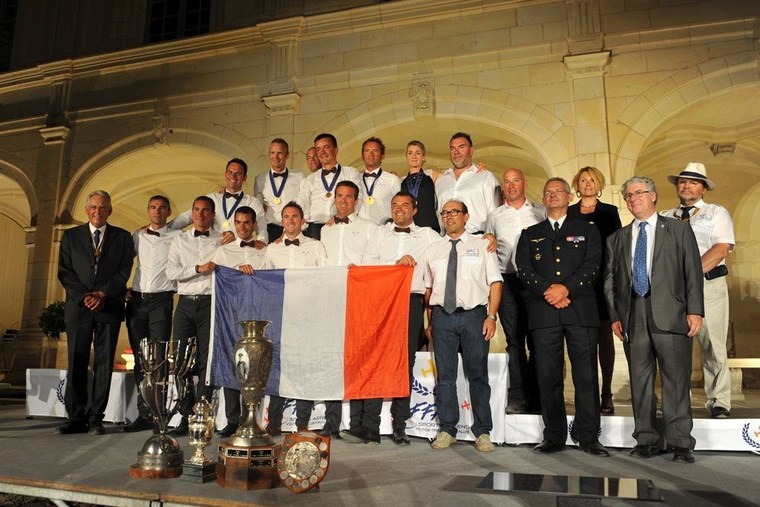
The judge's decision was announced at a lavish closing ceremony and the overall results were………………………
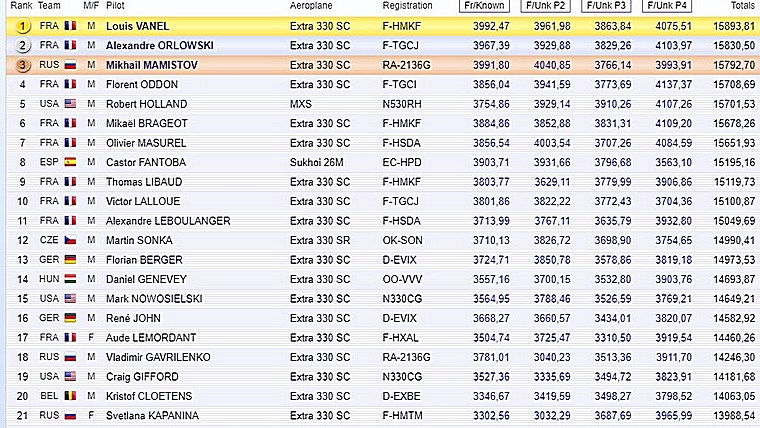
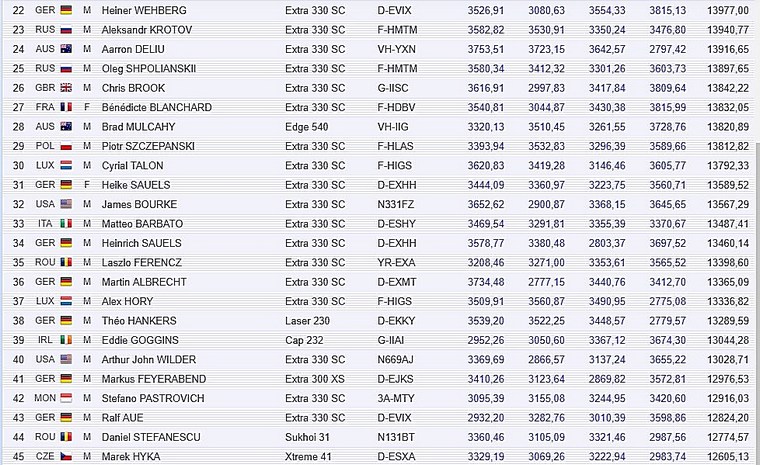
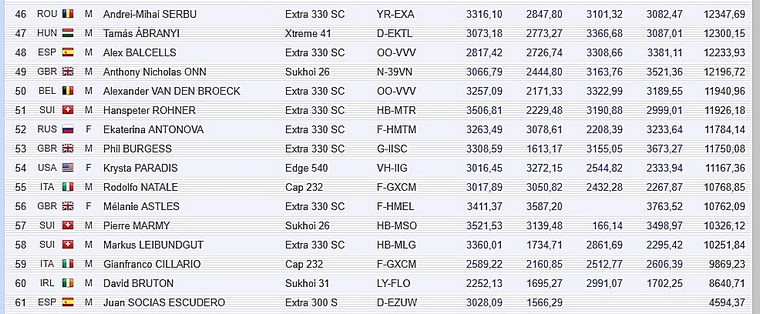
|
            |























